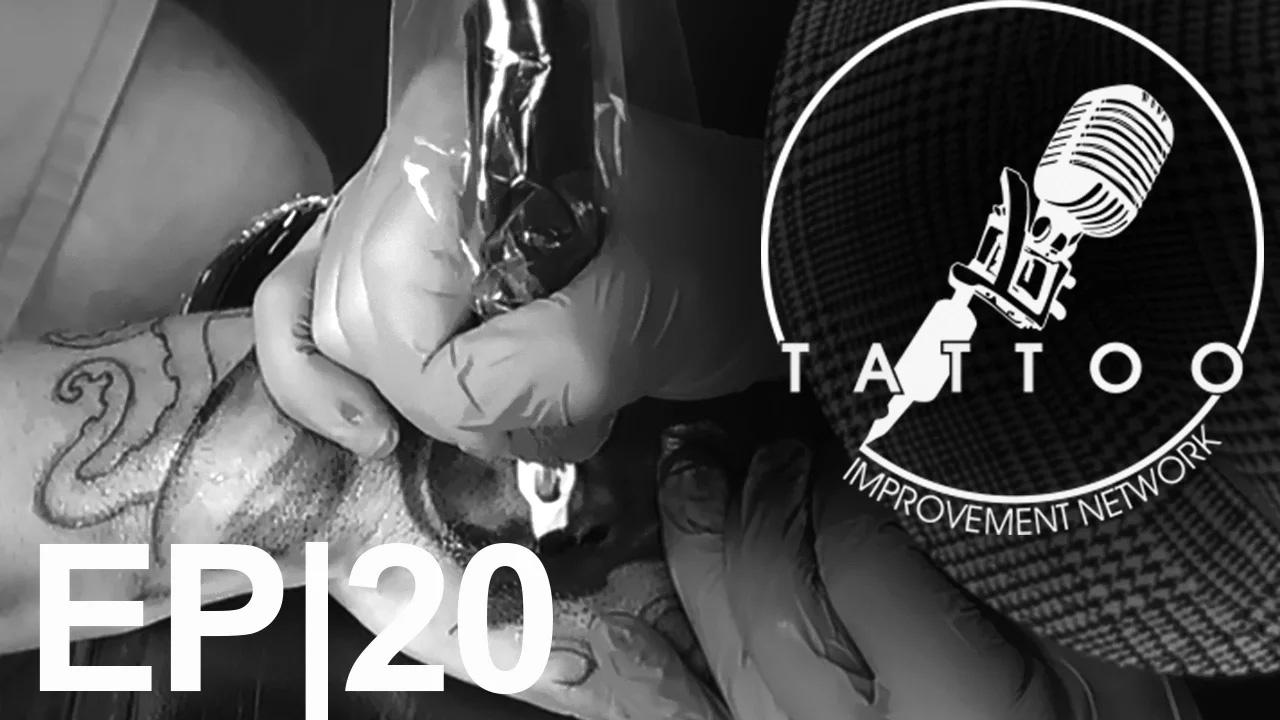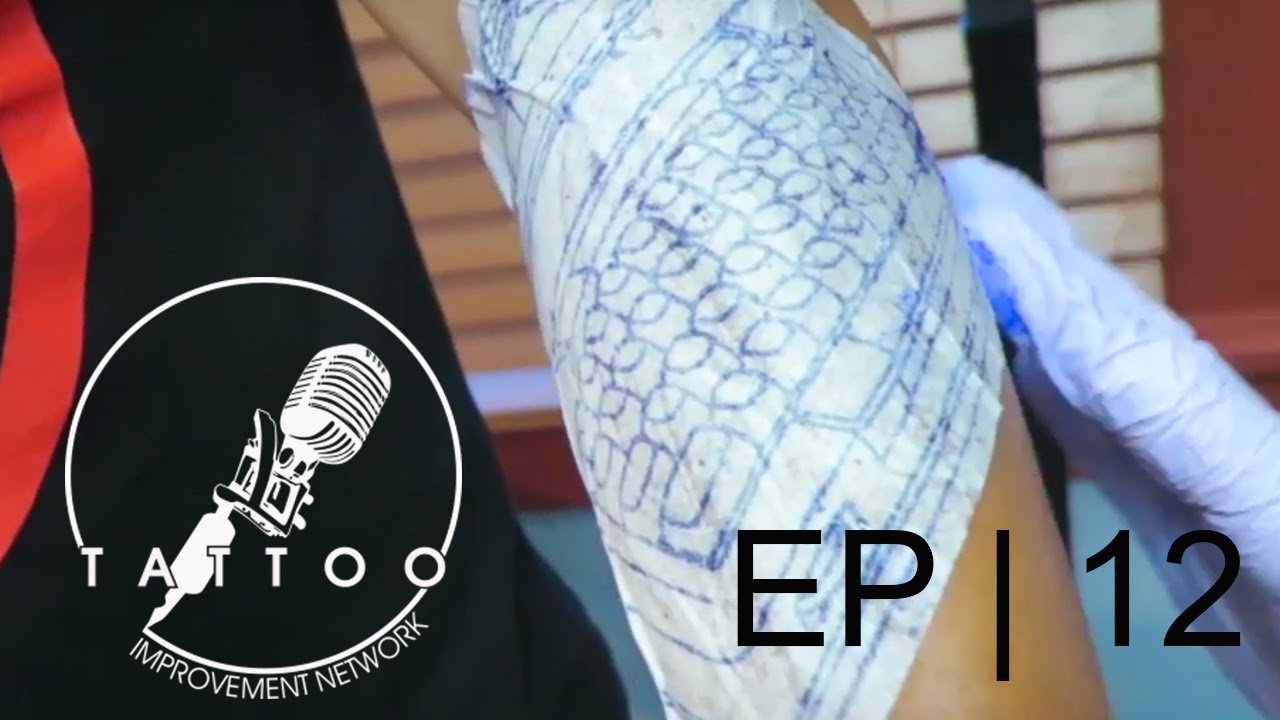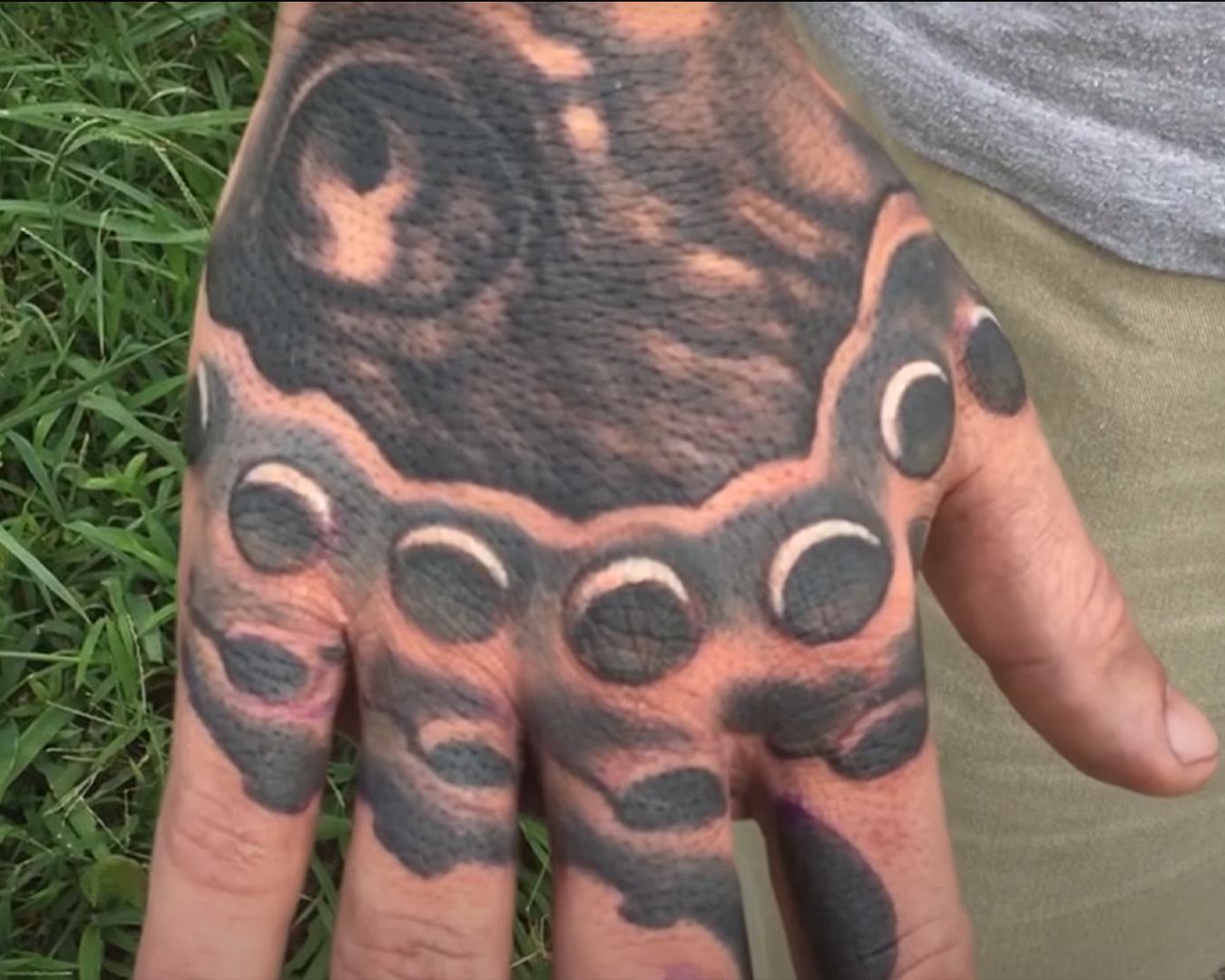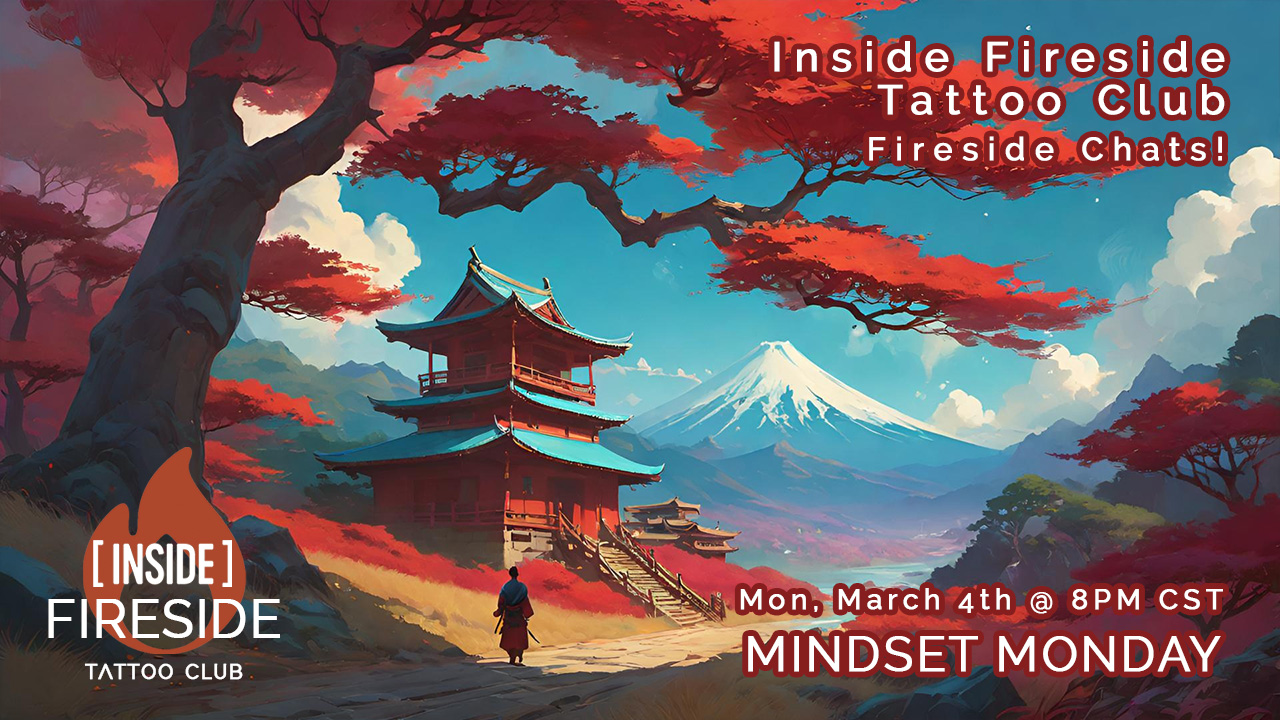Tattoo Science: Optimizing Tattoo Colors For Skin Types Tattoo Physics Part 4 Tattoo Overview Episode 11
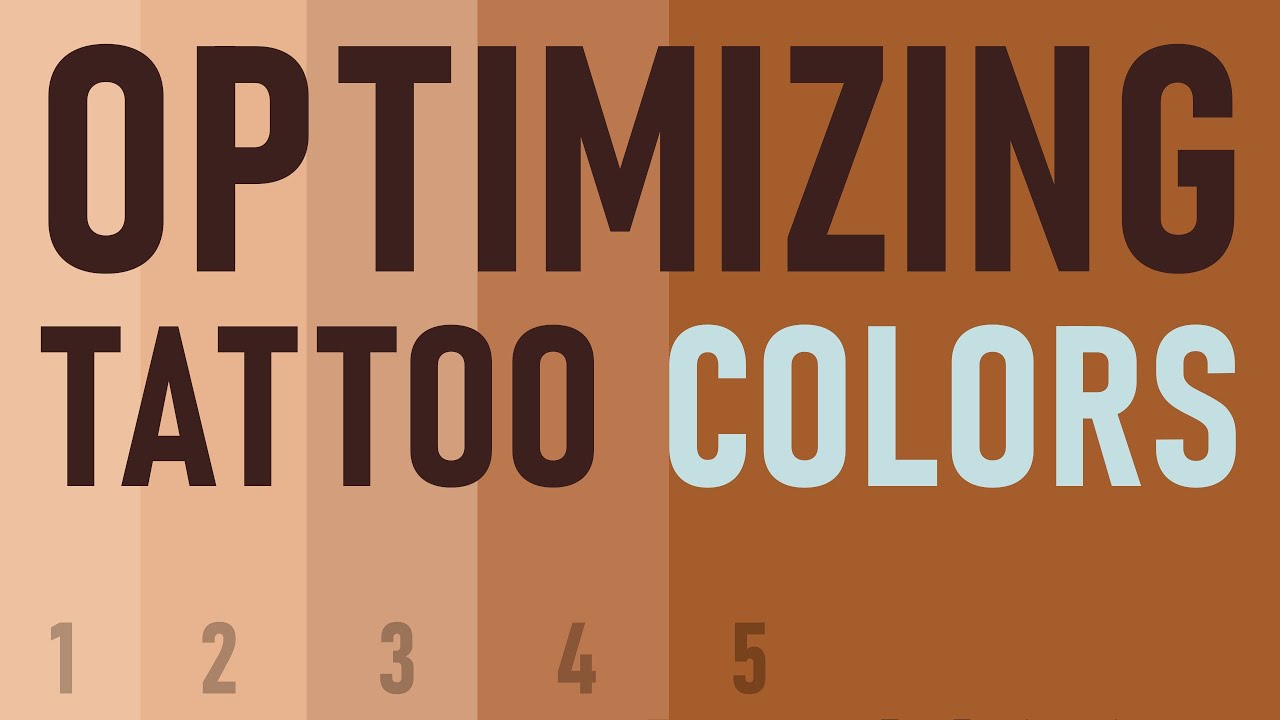
Optimizing Tattoo Colors For Skin Types! Tattoo Physics Part 4 | Tattoo Overview | Episode 11
By Jake Meeks —
Topics: Tattoos, Tattoos on Dark Skin tones, Skin Classification for Tattoos, Tattoo Science, Tattoo Color Palette, Tattooing Technology, Tattoo Terminology, Tattoo Standardization, Common Language for tattooing
This episode was made possible thanks to:
Communication Breakdown
“To get more technology into tattooing ink...the only thing that's really holding it back is ways to describe it”
-Shawn Bellina, S8 Chemist
Language...This is something that virtually all societies, communities, and industries have. Something that allows a group of people in a room to say more with less or speak volumes with just a few marks or symbols on paper. Language is an essential component of modern life, therefore when you can't communicate effectively it may be extremely difficult and time-consuming to convey anything you simply understand.
In part 3, we discussed what technologies could help tattooing evolve and become more robust and predictive. In this section, we'll expand on that conversation and explore why tattooing and tattoo artists may want to consider different methods to standardize communications between technologies, industries, and even themselves as tattooers.
Skin Classification Method
“...as a first step, we looked at all of the skin classification methodologies that are out there for medicine, and found some massive holes in there for tattooing. It wasn't capturing the full color gamut of human skin...”
-Shawn Bellina, S8 Chemist
A classification system for the myriad of skin types would be a helpful starting point. It could generate ways for tattooers to communicate between each other, give advice, and allow tattooers to make a better decision knowing what tattoo inks worked better on what skin types.
What would something like this look like?
Potentially you’d have something simple, but very comprehensive, where even if your client doesn’t fall directly on any one section you’d have a good idea where they land. You’d probably want to consider having a warm and cool palette as well since some skin tones lean more towards either red or blue.
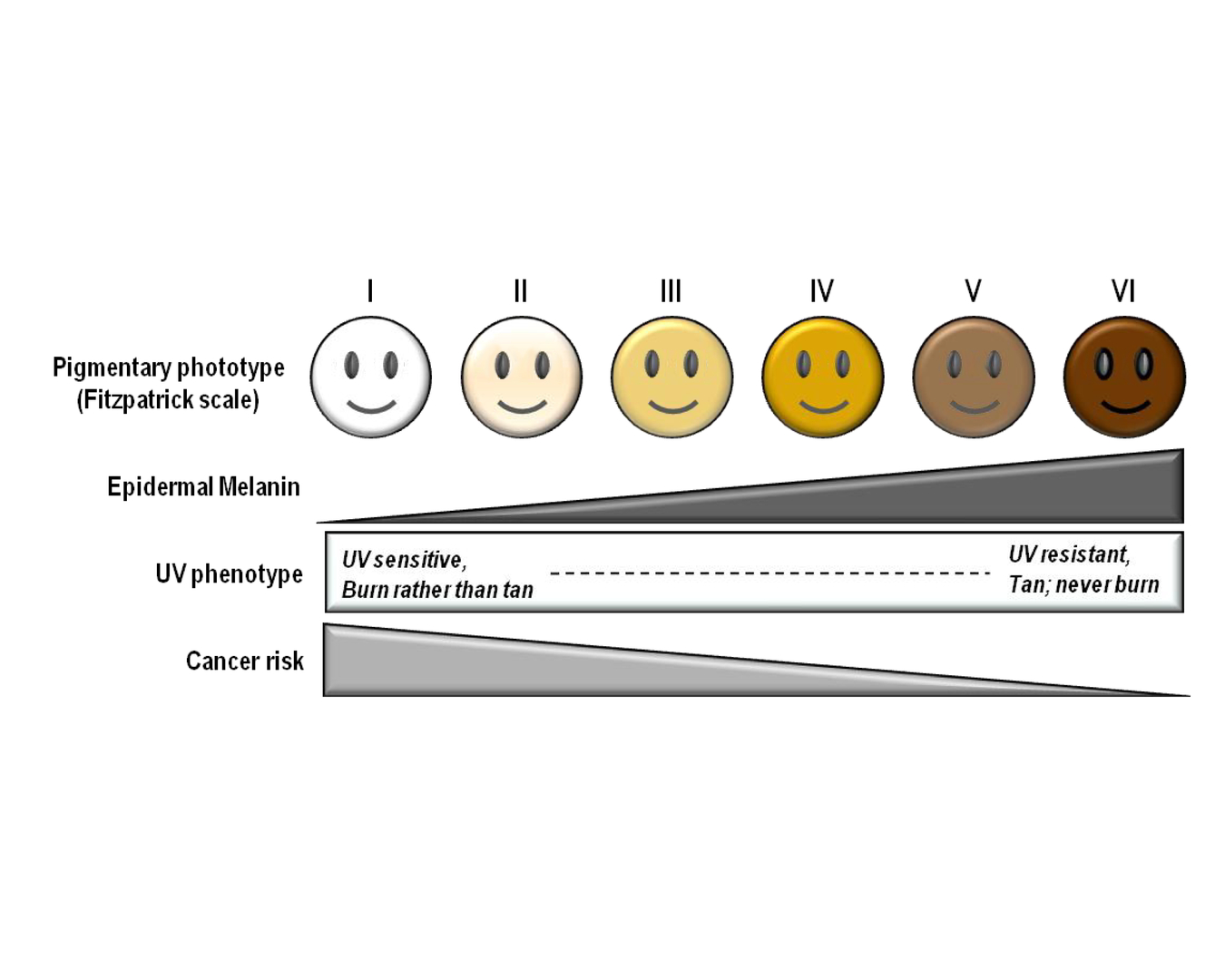
-The Fitzpatrick scale is a numerical classification schema for human skin color. It was developed in 1975 by American dermatologist Thomas B. Fitzpatrick as a way to estimate the response of different types of skin to ultraviolet (UV) light. - wikipedia
Though this scale is standard in the medical community for determining cancer susceptibility it is not nearly inclusive enough to use for tattooing. There are just too many variables it doesn’t account for, such as the Red (warm) and Blue (cool) variances between skin. Other scaling methods exist that are more comprehensive and wide ranging but are not nearly as intuitive.
The Image below is an example of what a good scale would look like, created by S8 Tattoos team of scientists. Not only does it cover a 12 tone range of skin colors, but it divides them into warm and cool variances.
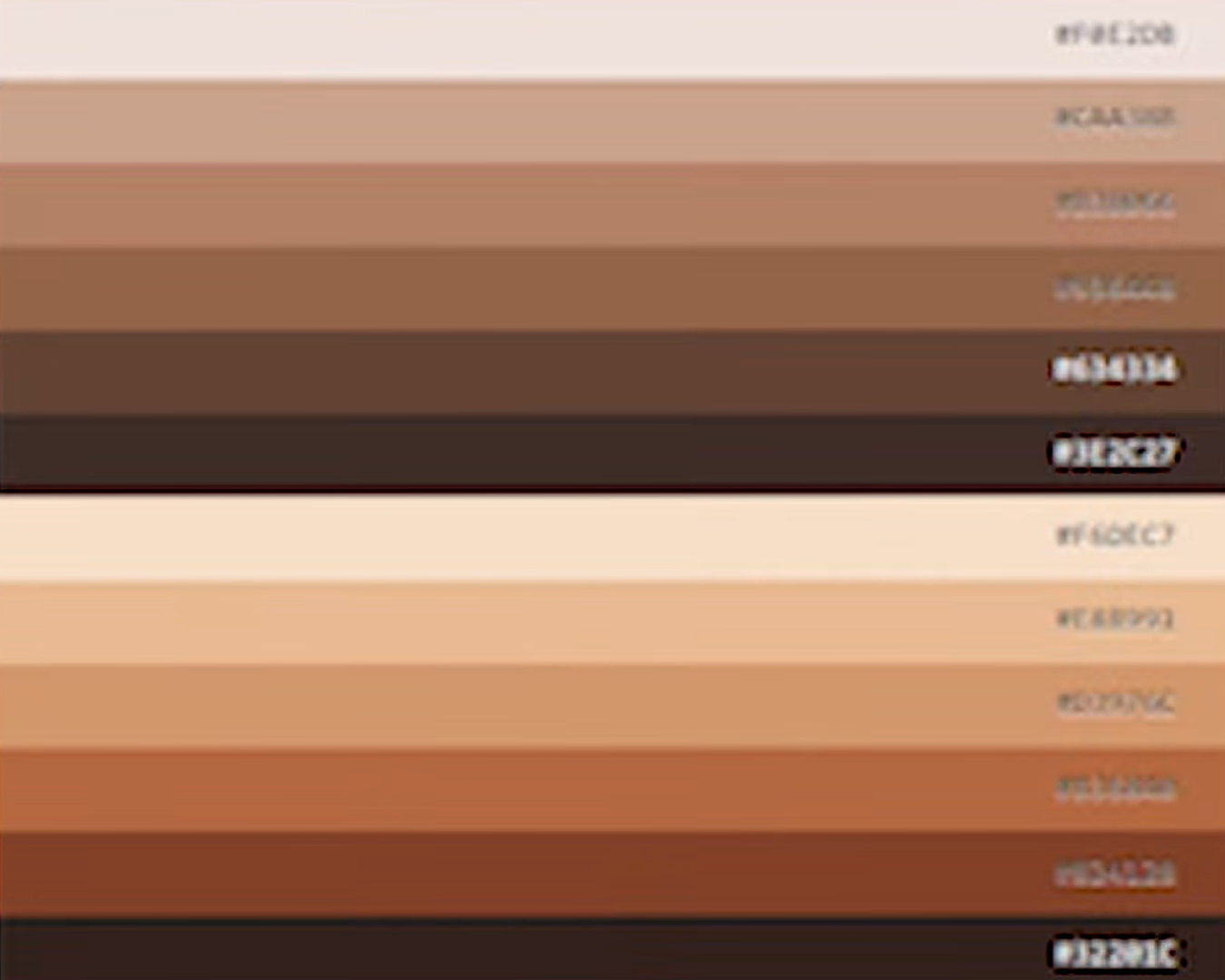
What are the applications?
Systems like this would also allow parts of the industry, such as tattoo ink manufacturers, to create guides for tattooers and take out some of the uncertainty when making color choices. You could potentially stamp the side of a tattoo ink bottle with a set of “skin tone numbers” or create a chart on a manufacturers website that approximates what colors might be better suited for different situations. Some art supply manufacturers use a similar charts for paint and colored pencils to determine Lightfastness and Opacity
Ideal Tattoo Color Palette
“Assuming that you can get all tattooers to agree or adopt skin type color index then you'll end up with something like six to seven colors that'll be the optimal colors that'll work in tattooing. They'll read the best, they'll be very predictable. That doesn't limit the artist because you can still mix those colors…”
-Shawn Bellina, S8 Tattoo Chemist
Often enough, when you’re choosing colors for a tattoo you can run into some issues. Occasionally when clients come back with their healed tattoos you can be a little disappointed to find that the ultra bright green you packed into those leaves looks a little drab or splotchy now. What happened (Link to Hi-Tech)? Could there be a universal way to fix these kinds of problems?
Limiting your options
When it comes to picking tattoo colors, there are a few things to think about. How many colors do I really require? Is it practical to restrict your color palette? Are there certain skin tones that benefit from particular color palettes? Could we streamline the procedure?
Tattoo Ink manufacturers create enormous catalogs that can cover just about any color, transition, or problem you might encounter. But with the rainbow at your fingertips sometimes it can be a little daunting trying to decide. Limiting your own color palette might be a good way to take a lot of the guesswork out of decision making.
Most ink brands have "Signature Sets" which contain a limited color palette that an artist normally uses. These can be helpful too if you're really inspired by an artist or aren't sure where to start when building your own catalog or library of tattoo colors.
What's a good starting point?
Building on some of the aforementioned ideas, like establishing a clear index for classifying skin types. You should be able to run a computer simulation and end up with about six distinct hues that will be the ideal colors for tattooing any skin tone. That might seem a little limiting to most veteran tattooers, but tattoo artists and ink manufacturers would be able to mix those colors and still be able to create a range of colors and options that would be just as extensive and make it more inclusive to clients who fall onto the darker portions of the scale. you might think of a CMYK printer, which only has 4 standard colors, or a standardized palette might look like the example below.
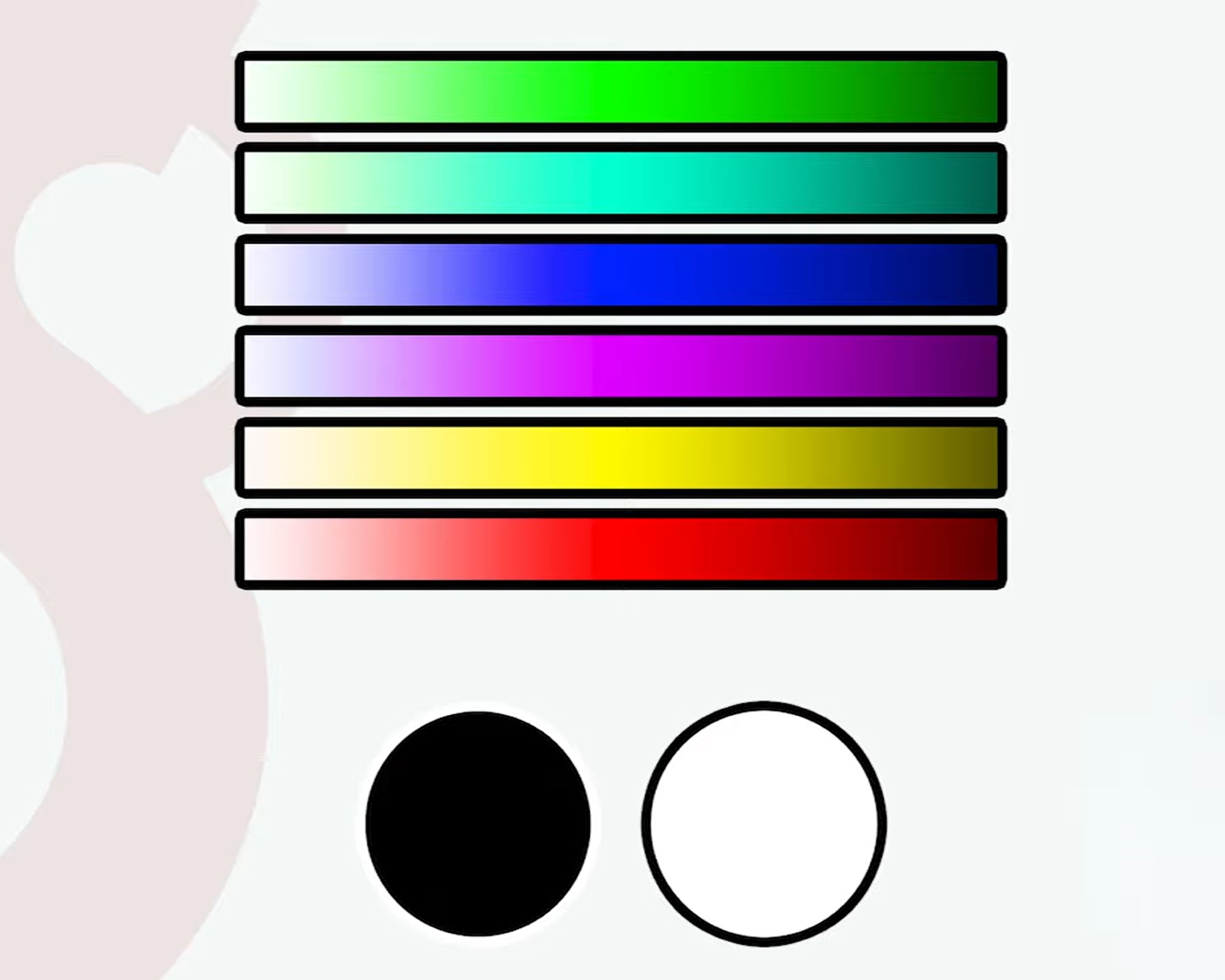
Predictive Computer Simulation
There are many technologies making it possible to predict how a tattoo will look as it heals and ages over time. Technologies that will revolutionize the tattoo industry, making it easier for artists to create designs that will age well and giving clients a better idea of what their tattoos will look like as they move through the world.
As mentioned in Part 3, 3D modeling has become increasingly common in the world of digital art, with numerous applications available. Photoshop, Procreate, and Clip Studio Paint are just a few programs that have incorporated 3D modeling into their assets. There are a few additional more powerful softwares on the market such as Z-Brush and Blender that specialize on this.
In order for tattooing to make full use of these more sophisticated technologies there needs to be a conversation around some type of system or language that we can create. Something to help guide each other and people coming into the industry towards a more constructive solution.
The Goal
“As tattooing evolves and you're trying to share a technique with a colleague and you said "I was tattooing this person and she's a '3' everybody knows what you're talking about…”
-Shawn Bellina, S8 Tattoo Chemist
We’ve touched this topic a few times already, but having systems and language in place would help with ease of communication between individuals and between sectors of the tattoo industry. A set of symbols or numbers that everyone in the industry understands.
If you want to get more technology into tattoo, the main thing holding it back is a lack of understanding and common terminology. We really need to define some key terms and variables. Once we have a shared language, we can start to create technologies to improve the tattoo experience.
Common Language
“So, if we can define some of these terms and variables then you can look for appropriate technologies to make the experience better...make the outcome better.”
-Shawn Bellina, S8 Tattoo Chemist
There have been many new ideas and technologies coming into the tattoo industry. With new government regulations such as the “EU Pigment Ban” it might be a good time for tattooing to start coming together as a community and form its own industry regulations.
Making efforts to build these systems for communication like a standardized color palette or a standardized skin tone scale enables tattooers and the industry to analyze, test and properly label tattoo ink. Along with that it increases our ability to push back on such regulations and recapture it ourselves.
Looking outside tattooing
“It's not unlike some of the problems that we're trying to solve in design and in drawing…It's having a common language, so that whenever you say something people read it the same way.”
-Jake Meeks
So what do we do? How do we find this “Common Language” we keep talking about? I think the best examples might be outside the tattoo industry. To start, I think a stellar example would be music. The idea that any trained musician can just walk into a gig and the band leader says “We’re gonna play a II-V-I in b#m” and that person says, “Okay” is the same kind of thing that’s lacking in tattooing. Now music isn’t the only example. We have a wide range of other disciplines we can pull from including chemistry, physics, and art. But, being able to communicate in these terms is exactly the same type of problem we should be trying to solve. Being able to have a language and body of literature not only allows tattooers to communicate more easily, but it could potentially create a better and safer experience for clients as well.
Suggestions and Ideas For New Tattoo Science Topics?
Want more tattoo education and resources?
Check out our Tattoo Science & Technology catalog HERE!
Transcript for this video can be found (here). All transcripts can be found (Here)
The Fireside Tattoo Network is home to the Fireside podcast, Fireside Technique video series and our Fireside Weekly blog.
The Fireside Tattoo podcast is hosted by veteran tattooer Jake Meeks, check out our episodes where we discuss, argue and wax philosophical, from tips for all levels of artists to trends in the tattoo world. Many guest artists have sat down for interviews and in-depth conversations and many more are planned…check back often!
Our Fireside Tattoo Overview video series offers informative, short, and detailed videos geared towards helping artists understand the science and nuances of tattoos and make more informed decisions to improve their work. We often take some of our more technical topics from our Fireside podcast and film an in-depth, narrated, time-lapse video showing exactly how Jake or our featured artists handle certain issues.
Support us while buying the stuff you need at the links below!
- Get 10% off the Neuma 4 with code “Fireside” at checkout
https://neumatattoo.com - Get 10 % off all S8 Tattoo products with promo code “Fireside”
https://s8tattoo.com/ - TattooNOW Website and Automation services at the link below
https://TattooNOW.com/Fireside - Get 10% off your order from Raw Pigments with code “fireside”
https://rawpigments.co/
Tattoo Science
Our goal as tattooers is to get ink into skin as efficiently as possible while causing the least amount of skin trauma in the process.
By gaining a basic understanding of how ink actually gets into skin, we give ourselves a much better chance for success. The Fireside Tattoo Network has interviewed specialists in tattoo machines, ink, fluid dynamics, and tattoo physics to bring you the most comprehensive tattoo science and physics information available anywhere.
Check out these popular tattoo science and tech articles:
Still interested, want more? You can look at our podcast episodes HERE!
Recent News
Tattooing Hands and Knuckles
- 04/10/24